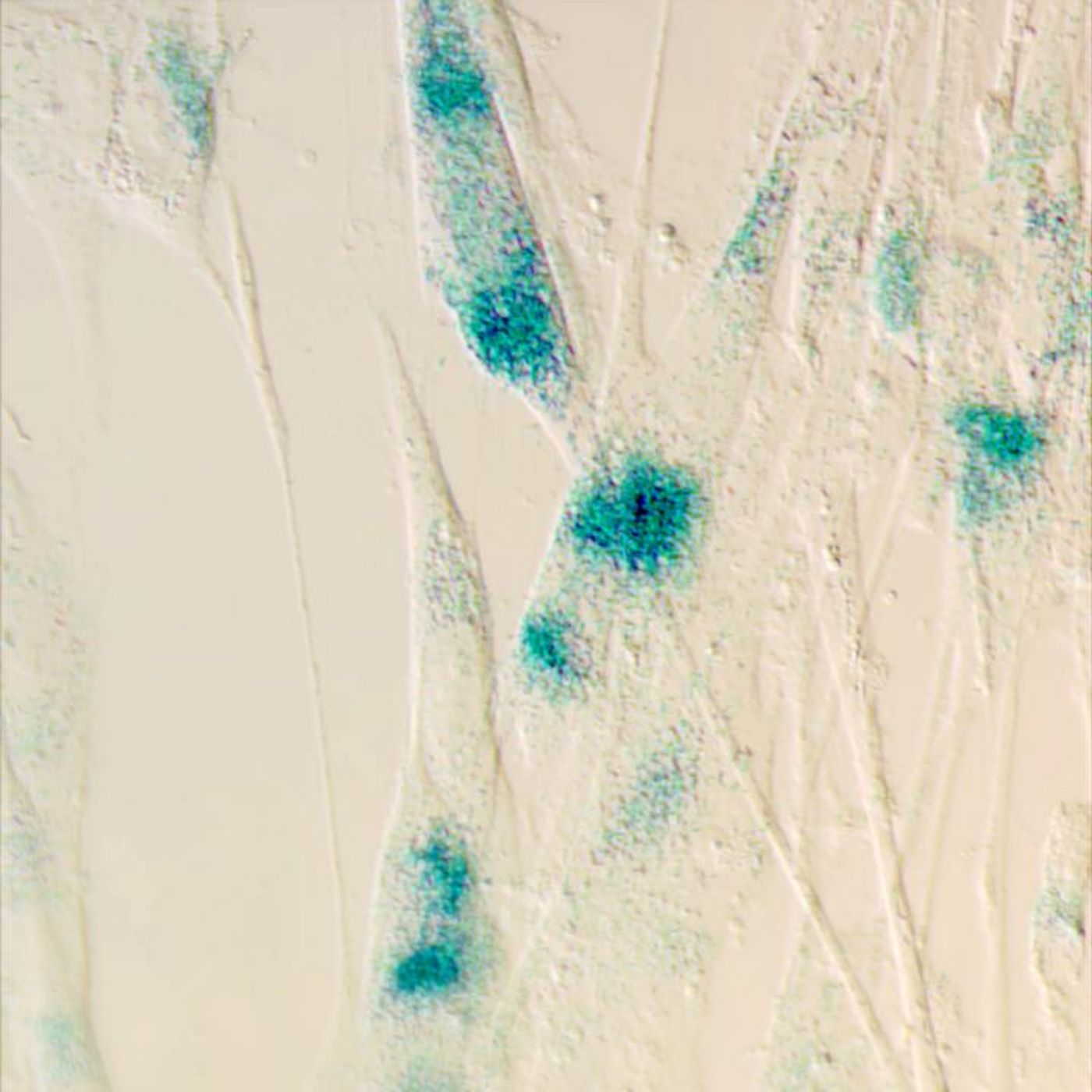Cell Division Ceases When CD36 Kicks in
In life, most of our cells experience a tremendous amount of turnover, on the order of billions every day. As cells age, they stop dividing in a process called senescence, which is a natural part of getting older. Those senescent cells have been linked to a variety of diseases of old age including arthritis, cataracts, and heart disease. Cancer cells, on the other hand, are known to bypass senescence and go on to divide uncontrollably. New research reported in Molecular Omics describes how one gene, CD36, was found to have pronounced activity in aged, senescent cells.
The researchers, from University at Buffalo, also found that by increasing the level of CD36 in young cells, they could force them into a senescent state. That effect was observed spreading to other cells in the local environment. In the end, almost all cells growing in a lab dish were showing signs of senescence while only about twelve percent of those cells had high CD36 activity. Any new cells added to that culture also stopped dividing.
"What we found was very surprising," noted Ekin Atilla-Gokcumen, Ph.D., an assistant professor of chemistry in the UB College of Arts and Sciences. "Senescence is a very complex process, and we didn't expect that altering expression of one gene could spark it, or cause the same effect in surrounding cells."
CD36 seems likely to be a focus of future studies. The mechanism of the gene is still unknown. It encodes for a protein that hangs out on the surface of cells. What it does out there is still a mystery, but it's been hypothesized to play a role in lipid function.
Cell fates, including senescence, are outlined in the video above.
"Our research identifies CD36 as a candidate for further study. Senescence is a fundamental aspect of being a cell, but there is still a lot that we don't know about it," said Omer Gokcumen, Ph.D., an assistant professor of biological sciences in the UB College of Arts and Sciences. "Senescence seems to have implications for old age and cancer, so understanding it is very important."
This research began with a general idea to identify genes that were relevant in senescence. The scientists were looking for insight into genes relating to lipids; it has been shown that lipids are part of cellular aging. By looking at the genes that were active in senescent cells through transcriptomics (described in the video below), CD36 emerged from their investigation.
In another analysis, it was shown that CD36 was one gene that was more active when senescence began. The CD36 gene sequence varies a lot from person-to-person. Gokcumen noted that such variation could give the gene a lot of range in how it functions.
"We did not set out to look for CD36," Gokcumen added. "We took a broad approach to our study, using transcriptomics and an evolutionary framework to identify genes and proteins that are fundamental to the senescence process. In the end, CD36 stood out as an outlier in both cases. That's kind of beautiful -- a compelling way to do biological research."
Sources: AAAS/Eurekalert! Via University at Buffalo, Molecular Omics









